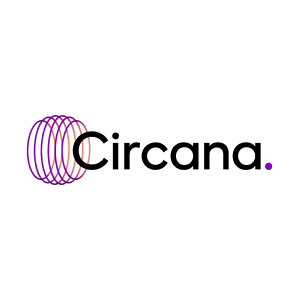- Circana

- Oct 22, 2024
- 3 min read
By: Jen Gold, SVP, Agency and Distribution Partnerships, and Michelle Snell, Director, Product Marketing, Media
The marketing industry has been swept up in privacy regulations that rightfully protect an individual’s data. This can be seen in Google’s recent announcement of its plans for third-party cookies, its recent antirust ruling, and Washington state’s My Health My Data Act.
While first-party data hedges against these external factors impacting marketing data availability, an integrated data strategy is the best approach. When integrating second- or third-party data with other audience targeting strategies, it’s important to scrutinize data sourcing and quality. Why? Because the stakes can be high. Consequences for marketers who use bad data for audience targeting can include:
Ad waste resulting from misguided contextual targeting, such as when marketers accidentally target, say, a teacher instead of a dentist
Ad fatigue caused by audiences that aren’t refreshed in a timely manner
Diminished brand reputation from targeting missteps – for example, when someone’s search history causes ads for engagement rings to appear on a shared computer before a person has been proposed to
Legal action from consumers over the misuse of personal data
Incorporating purchase-based data into audience targeting strategies can help marketers mitigate these pitfalls and risks. But that’s only half the battle; electing the right data supplier is equally important.
Choosing the right partner requires asking the right questions. We recommend organizations use request for proposal (RFP) or request for information (RFI) forms as part of their selection process. This can help gain transparency from second- or third-party data suppliers. The questions to build into these forms fall into two categories: how they define and manage data and their audience segment process.
How does the data partner define and manage data?
How a potential partner manages and defines data is critical in building trust. Marketers can begin gauging their readiness by asking the following questions:
What is the partner’s data source? (e.g., retailer partners, loyalty cards, receipt panel)
Is the vendor the sole data provider?
Is the data consented? If yes, how is the data consented?
How does the vendor address compliance with state laws?
How does the vendor use its data to create segments for audience targeting?
Understanding a prospective partner’s process and practices around creating segments for audience targeting is another step that can’t be overlooked. When marketers screen potential collaborators, they should consider asking the following questions:
Does the provider offer modeled or deterministic target audience segments?
How does the data provider define deterministic data?
What percent of the audience segment is modeled versus deterministic?
What modeling techniques are used? How are these models validated?
How often are the audience segments remodeled?
Is the audience segment data pseudonymized?
How is the audience segment data matched to activation partner data?
Marketers often use agencies for digital marketing activation and strategy, so in these instances we recommend they ask the agency or activation partner these additional questions for greater transparency:
What is the match rate between the data provider’s IDs and the agency’s IDs?
Does the agency offer any additional modeling or expansion on top of the original audience size? If yes, describe the process and outcomes.
Can the agency augment audience segments with other data sources? If yes, describe the process and outcomes.
Do the agency’s activation partners do any additional modeling or expansion? If yes, describe process and outcomes.
Scrutinizing audience targeting vendors and data partners, especially those offering purchase-based targeting, has long-term benefits to marketers as the marketing industry faces external shifts that impact quality and amount of data available to marketers. Rest assured that high-quality marketing data partners that specialize in effective audience targeting are out there. Marketers just need to ask the right questions to cut through the noise.
To help you get started, we created a list of recommended questions to ask potential data suppliers in your RFI.























